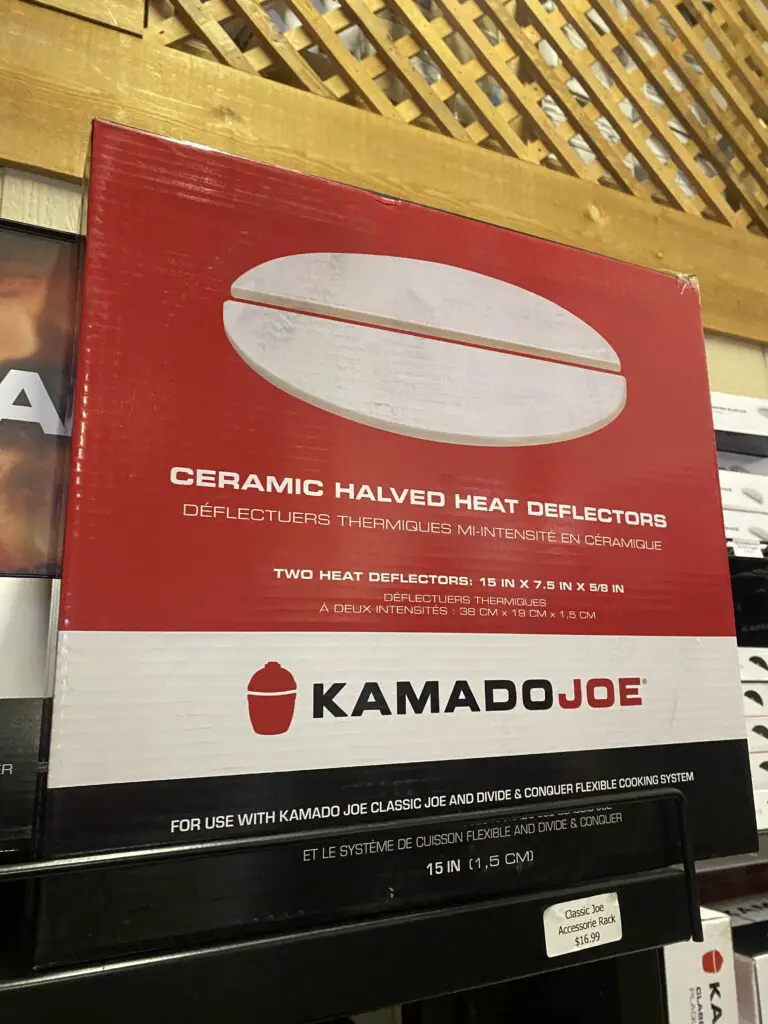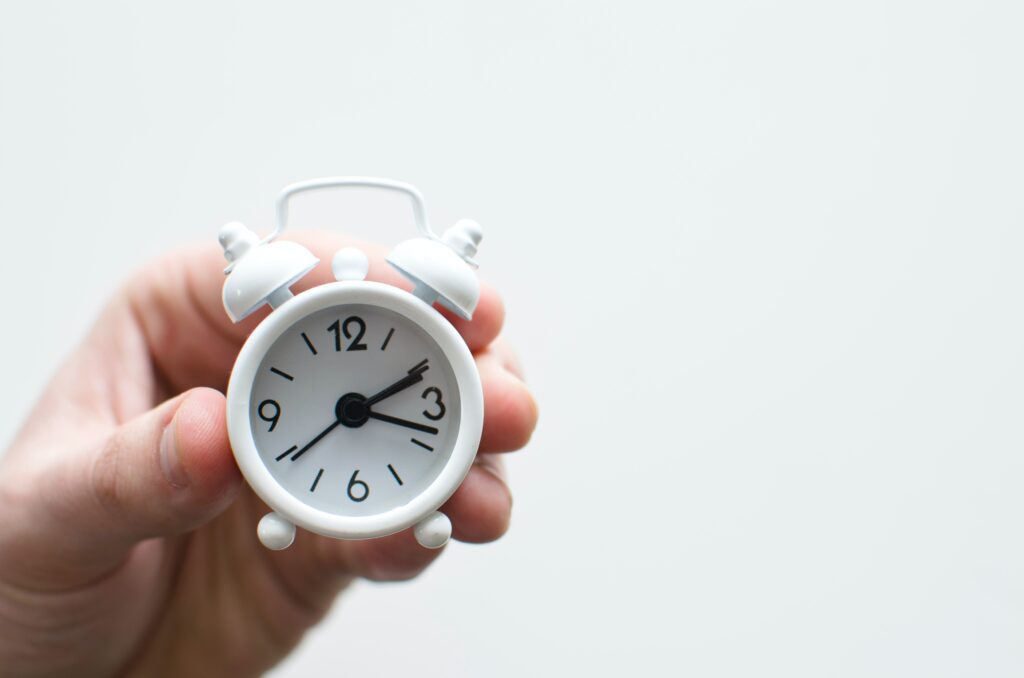We strive to provide you with authoritative, trustworthy, and expert advice. In doing so, the staff at bbqdropout.com performs extensive research, editing, and fact checking to every post on this webiste. If you feel that this article can improve, please feel free to reach us at staff@bbqdropout.com
Before continuing this article, I wanted to let you know that I have a YouTube channel where I showcase all sorts of video content related to BBQ. Subscribing would mean a lot to me, and I very much appreicate all the support!
Cooking Steak on Kamado Joe Jr
The Kamado Joe Jr. might be the smallest model in the Kamado Joe lineup, but that doesn’t make it any less capable of making a delicious steak.
You might be surprised to hear that you can make a steak two different ways on a Kamado Joe Jr.
You can cook it directly over an open flame, just like how you would sear a steak on a traditional charcoal grill.
Though if you are a little bolder, and you have an instant-read thermometer to guide you, you can also reverse sear a steak on a Kamado Joe Jr. Though the temperature strategies you use for these two methods are very different.

With the traditional searing method, you are looking for a flame temp of around 400 to 450-degrees. You can go as high as 500.
This is usually a simple matter of opening the lower damper to maximize the airflow and then searing the steak off for 3 to 4 minutes per side to get a nice medium-rare.
With a reverse sear, you want to use more of a slow and low approach with a flame that puts out around 225 to 250 degrees of heat.
A chunk of smoking wood for added aroma and flavor is a nice touch.

Then when the steak is warmed to roughly 90 to 100 degrees inside, you remove it from the heat and turn the flame up to the max.
You then sear it off to create a flavorful exterior crust with a perfect medium-rare interior.
How Do You Cook Steak on a Kamado Joe Jr?
To sear a steak over direct flame on a Kamado Joe Jr. you start with a medium-hot direct flame, and the lower damper three-quarters of the way open.
The target temperature on the dome thermometer should be around 400 degrees.
This will take about 10 to 15 minutes to let the grill grates and the fire fully heat up.
During this time, you should liberally salt the exterior of the steak and let it sit on the counter to bench rest for 10 to as much as 20 minutes.
This will let the interior temperature warm slightly to help the steak reach a proper medium-rare interior, without burning the exterior.
This technique is especially handy for bone-in steaks. The added salt will also help pull out water-soluble proteins to build a more flavorful crust.
When the Kamado Joe Jr. and the steak are ready, you should lightly blot the steak to remove any of the moisture from the surface. Then give it a quick seasoning of salt and pepper.

A gentle glaze with a neutral-flavored oil and bring it to the Kamado Joe Jr.
Sear the steak for 3 to 4 minutes a side, or until the internal temperature on an instant-read thermometer reads 125 to 130-degrees.
Then remove the steak from the direct flame and tent it with heavy-duty aluminum foil.
Let it rest for 5 minutes to let the internal juices redistribute back into the meat fibers.
This will also let the interior temperature carry over another 5 degrees to a perfect medium-rare.
Reverse Searing Steak on a Kamado Joe Jr.
Reverse searing a steak on a Kamado Joe Jr. calls for starting a slow and low fire of around 225 to 250 degrees to gently cook the interior of the steak, before bringing the flame up to high to sear it off creating a flavorful crust.
Though the trick is monitoring the temperature as well as managing the temperature of the steak while bringing the heat of the flame from low to high.
A wireless, instant-read probe thermometer is probably the easiest way to keep close tabs on the interior temperature of the steak. It lets you insert the probe one time and leave it there.
The wireless signal tells you what the temperature of the meat is to within a degree. If you don’t have one, you can use a standard instant-read probe thermometer.
Just do your best to insert it in the same hole each time you check the temperature of the steak.

Your target temperature when cooking a steak on low heat is around 90 to 100 degrees.
This should take roughly 10 to 15 minutes on a Kamado Joe Jr. at a temperature of around 225 to 250 degrees.
When the steak reaches the target temperature range, you need to open up the lower damper, just quickly take it off the Kamado Joe Jr. grill grates.
Wrap the steak in two sheets of heavy-duty aluminum foil, and then tent it with a tea towel. This will help hold the residual heat inside the steak while you bring the flame up.
If you’ve burned through a fair amount of charcoal already, you might want to add a handful of lump charcoal or perhaps some wood chips.
The goal is to boost the flame to at least 350 to 400 degrees or more.
Once the fire is good and hot, you can quickly remove the steaks from the aluminum foil tent and sear them off for roughly 90 seconds to 2 minutes per side.

You are looking for an internal target temperature of 130-degrees for a nice medium-rare.
When the steaks are ready, remove them and place them back in the aluminum foil tent for 3 to 5 minutes. This will let them rest, redistribute their internal juices and carry over the last 5 degrees to a perfect medium-rare degree of doneness.
What Temperature Do You Cook Steak on Kamado?
With steaks, the degree of doneness will be based on the internal temperature of the meat. You can use the following range as your guide.
Rare – 120 to 125-degrees
Medium Rare – 130 to 135-degrees
Medium – 140 to 145-degrees
Medium Well – 150 to 155-degrees
Well Done – 160+ degrees
Temperature for Cooking Steak on Kamado Joe Jr.
Searing steaks on a Kamado Joe Jr. over direct heat calls for a temperature of at least 350 to 400-degrees or more.
Though it’s wise not to push this small Kamado Joe above 500 degrees, as the intense heat can potentially crack the internal ceramic components or cause the bands to warp and come out of alignment for your next cook.
How Long to Cook Steak on Kamado Joe?
Cooking a 1.5-inch-thick steak to a perfect medium-rare, on a Kamado Joe over a 400 to 450-degree direct flame, will take roughly 3 to 4 minutes per side.
This will give you an internal temperature of around 125 to 130 degrees.
You can then remove the steak, tent it in heavy-duty aluminum foil and it will carry over the last 5 degrees to a perfect medium-rare.
If you wanted a rare steak at an internal temperature of 120 to 125-degrees, you would shorten the cooking time per side to 2 to 3 minutes.
A Medium steak, with an internal temperature of 140 to 145-degrees will take roughly 4 to 5 minutes per side. A Medium-well steak with an internal temperature of 150 to 155-degrees might be as much as 6 to 7 minutes per side.
Final Thoughts
The small, but mighty Kamado Joe Jr. is very much capable of making a delicious steak.
Though the method and temperature for searing it over a direct flame of around 400 degrees, is different from reverse searing it.
To sear a steak on a Kamado Joe Jr. over direct flame, you need to give the steak roughly 3 to 4 minutes per side. This will give you a steak with an internal temperature of 125 to 130 degrees.
You can then rest it in a tent of heavy-duty aluminum foil to let it carry over the last 5 degrees to a perfect medium-rare.
If you want to reverse sear a steak on a Kamado Joe Jr, you need to use more of a slow and low approach with a flame that puts out around 225 to 250 degrees of heat.
Once the steak has an internal temperature of around 90 to 100 degrees you remove it from the heat and crank the fire up to the max.
You can then sear it off for 90 seconds to 2 minutes per side to create a flavorful exterior crust with a perfect medium-rare interior.
Robert is a certified Pitmaster, with over a decade of experience in smoking the best meats you’ll ever feast upon. He also has a Bachelor of Business Administration from the University of Texas at San Antonio. When he’s not researching technical topics, he’s most likely barbecuing in his backyard.
